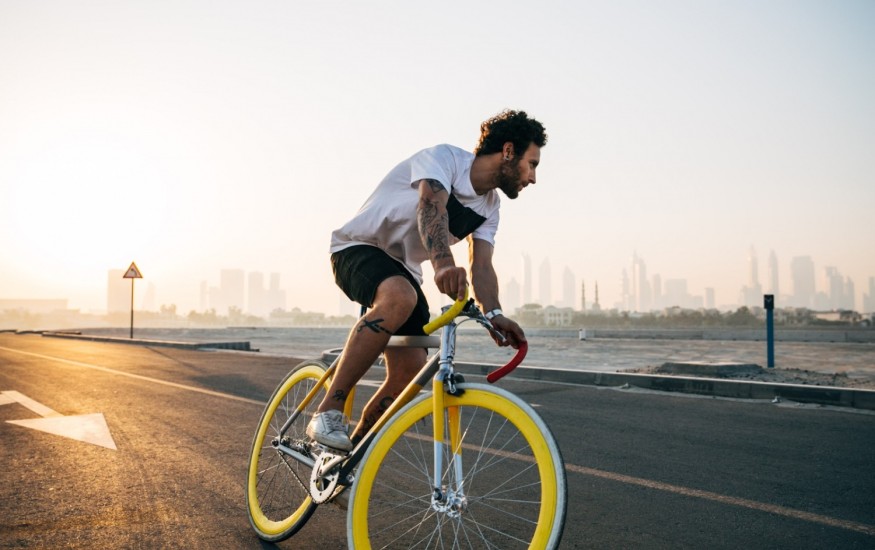
For bike enthusiasts all over the country, safety is the most important issue to consider when you choose a city to pedal in. Of course, a city's coolness factor can also be reflected in your decision. If you are relocating or just visiting, here are eight places to take your bike, helmet and kickstand - you'll certainly want to park your bike at times and enjoy what these cities have to offer!
Seattle, Washington
Seattle is taking initiatives to build more protected bike lanes that can handle the city's growth. There are 60 miles of greenbelt being built. Speed limits have been reduced by traffic light timing to a 23 average miles per hour in some areas to prevent bicycle and pedestrian fatalities. This is a city that loves its cyclists.
San Francisco, California
San Francisco didn't have a single protected bike lane in 2010; now there are ten. The city is also investing $112 million in improvements geared to cyclists. Their goal is to make half of all trips into the city viable through sustainable transportation. The current initiative is to reduce traffic fatalities to net zero.
Fort Collins, Colorado
Fort Collins has always been a relatively easy city to maneuver in and around. Recently though, the city is transforming into a phenomenal place for cyclists by installing grade crossings at 45 intersections. Grade crossings are now beneath overpasses so bikes rarely, if ever, need to cross paths with a motor vehicle. Still, it's always recommended to wear a helmet, even though there is no statewide requirement for helmet use in Colorado, and that goes for cyclists and for motorcycle riders aged 18 and over.
Minneapolis, Minnesota
Minneapolis may have many months of cold weather, but the city was founded on the premise that green spaces are a true necessity for the health and well-being of its residents. With 30 plus miles of peaceful routes, the city is a haven for cyclists and pedestrians. As of 2016, all streets must be built to prioritize pedestrians, cyclists, buses and then cars. Minneapolis has recently budgeted $1 million just for protected bike lanes, and they make clearing bike lanes a priority after each snowfall.
Chicago, Illinois
In recent years Chicago has built 21 miles of buffered bike lanes and upgraded many more with concrete barriers for a total of 176 miles. In a city that is 227 square miles that may seem insignificant, but Chicago has been working diligently to create a biker's paradise in an unbelievably large city. Even with super expensive rent prices, funding sources for the new cycling projects have been a combination of local, federal and private grants. The separation of bike and pedestrian paths along the shore of Lake Michigan was done almost exclusively through private funding.
Madison, Wisconsin
Madison has a long history of seriously accepting cycling as a means of transportation, especially in the downtown area. Most of the city's bike lanes are painted rather than protected which can be uncomfortable for a newbie rider. One of the innovations Madison has been working on is route signage to show riders the distances and times to certain destinations.
Cambridge, Massachusetts
Because of the sheer number of people--105,000 residents, many tech companies and universities stuffed into 7.1 square miles--bike riding is a necessary mode of transportation. As of 2019 seven percent of Cambridge residents commute via cycling. The city is rapidly increasing the number of protected bike lanes after a year of multiple fatalities. Along with lowered speed limits for vehicles and bike lanes moved out of door zones, Cambridge has adopted a European ambiance for bike riders.
New York City, New York
Frederick Olmstead--the father of modern landscape architecture and the designer of Central Park in New York City-would be so happy that the park has been designated car-free. Though the park is generally used for recreational riding that was the original intent.
New York is adding protected bike lanes at an astronomical rate. In 2014 there were very few protected bike lanes but as of late 2019 there were over 1250 lane-miles that extend into all five boroughs. Like Seattle, New York is experimenting with traffic light timing to make cyclists more visible at dangerous intersections. There has been a drastic reduction in crash risk also-- down by 74% from 2000 to 2019.
Final thoughts
As our cities become more congested it only makes sense to provide cyclists with more, and safer routes. Riding provides a pollution free method of transportation and affords riders the ability to maintain a healthier lifestyle.
© 2025 NatureWorldNews.com All rights reserved. Do not reproduce without permission.




